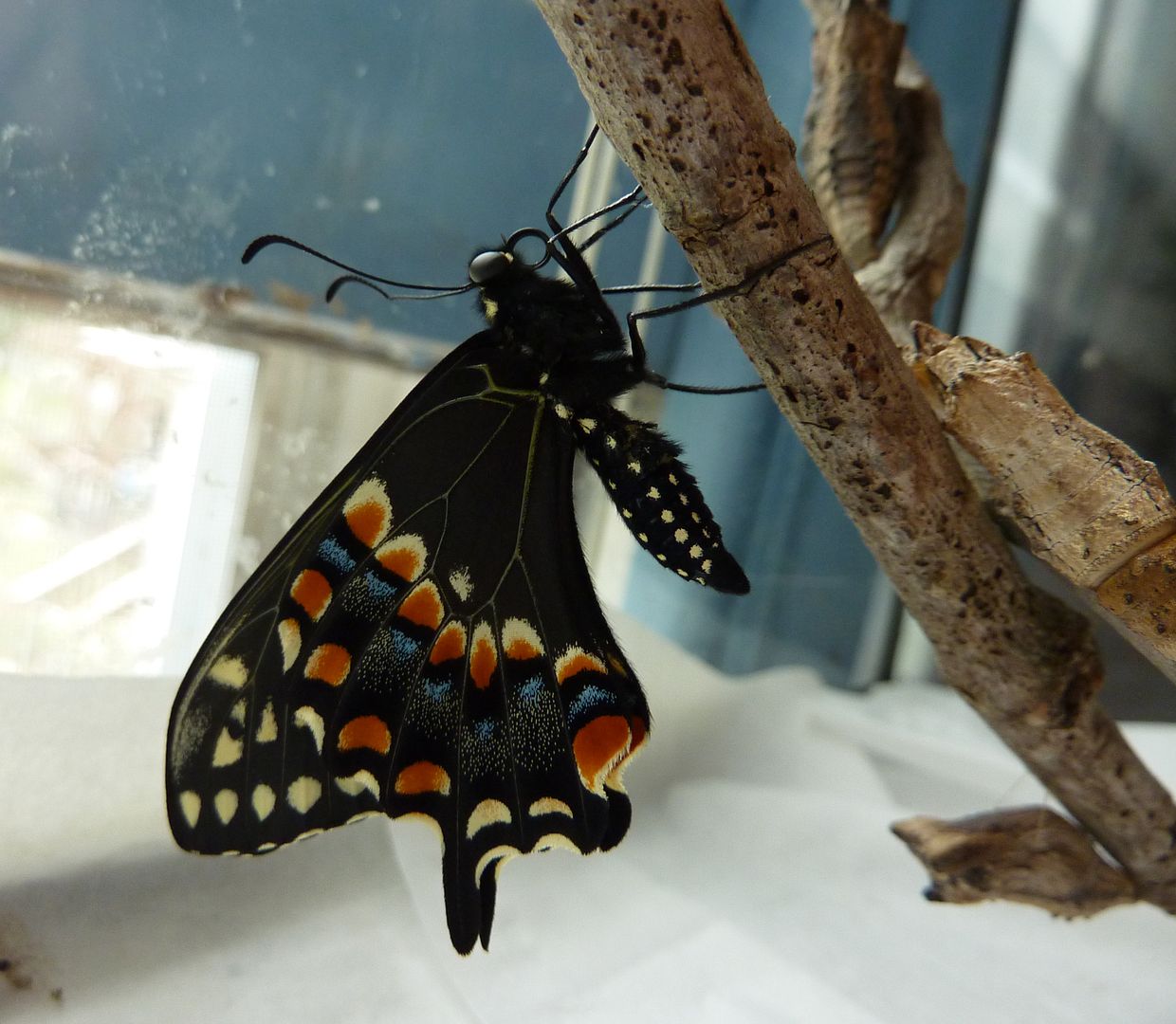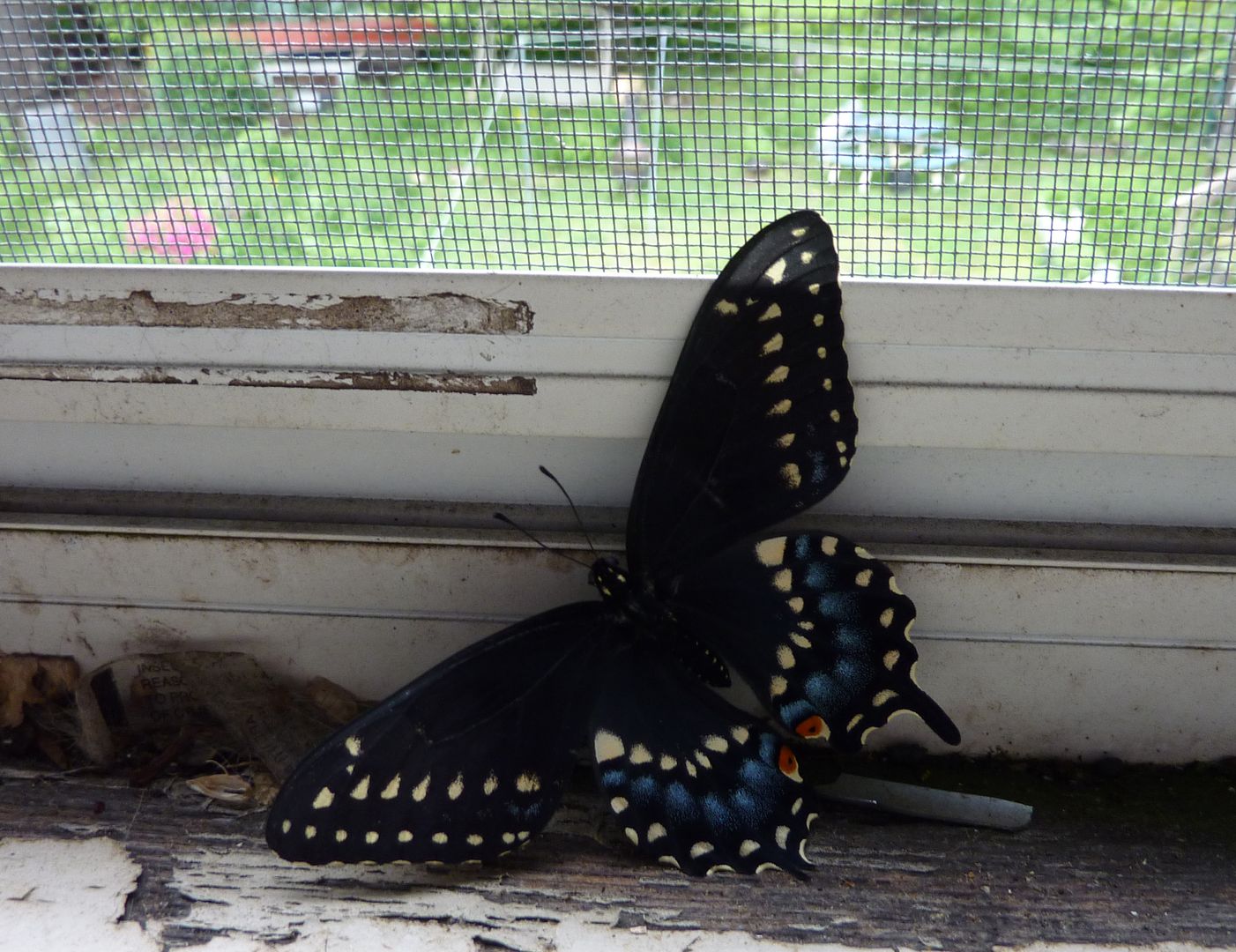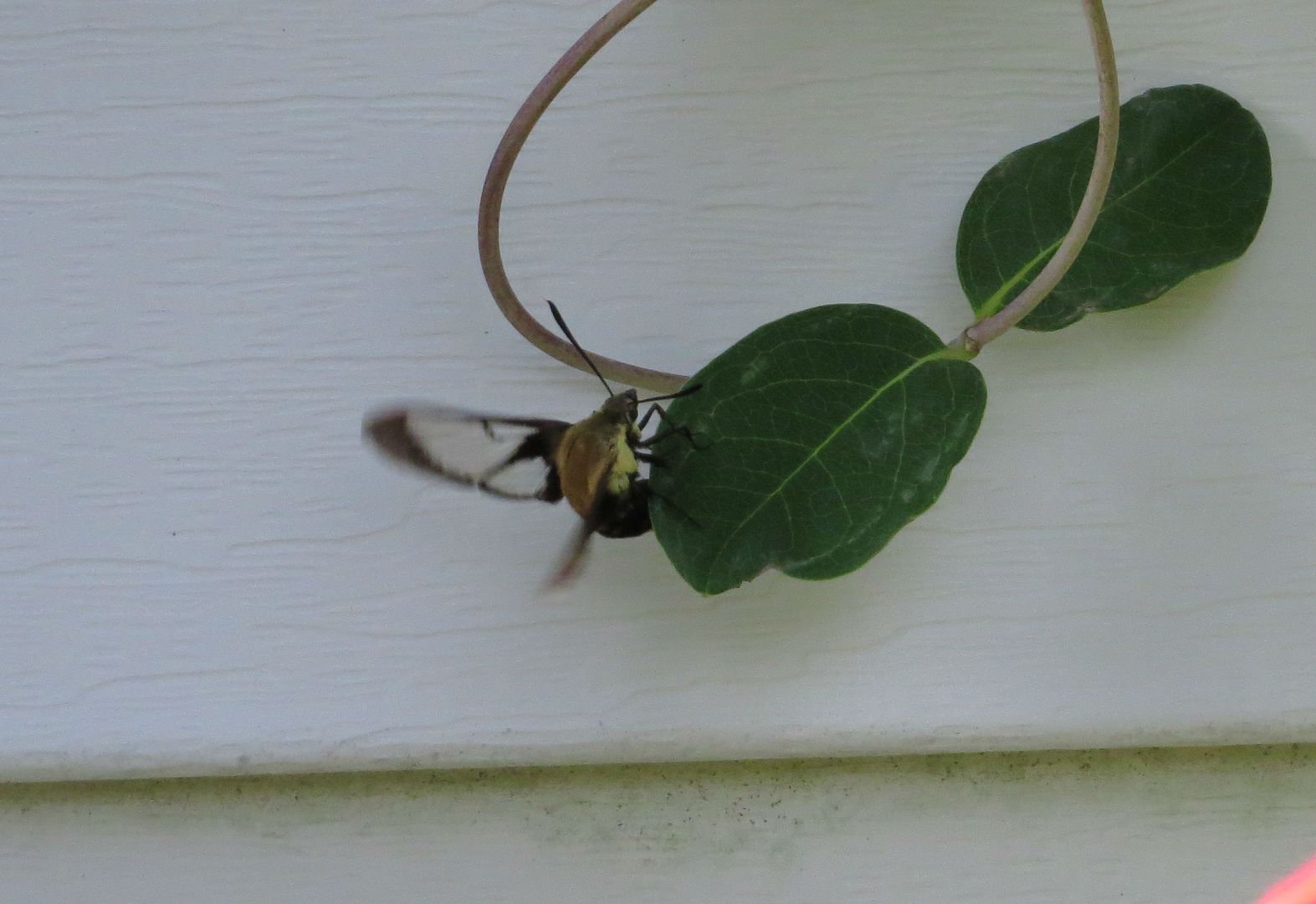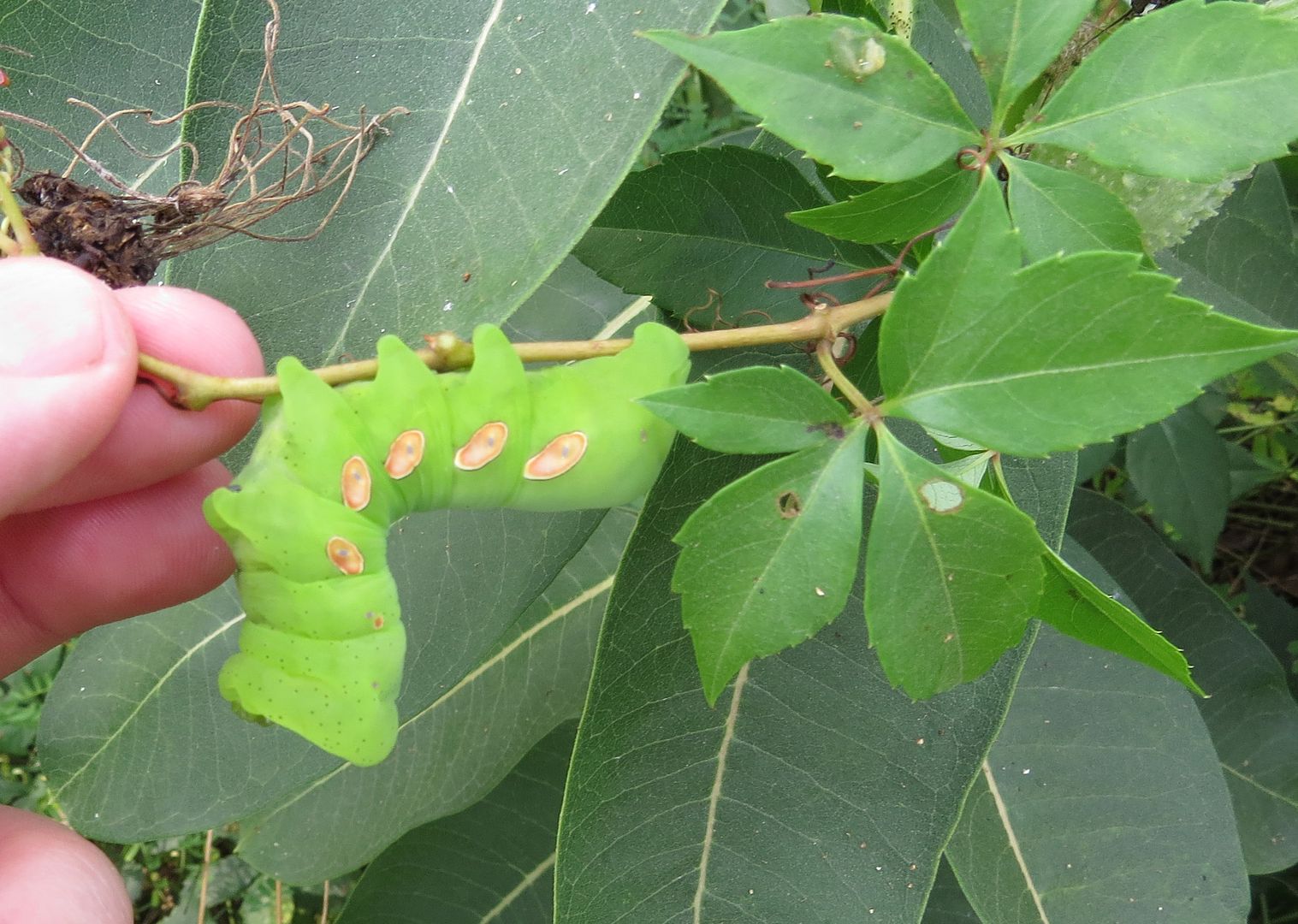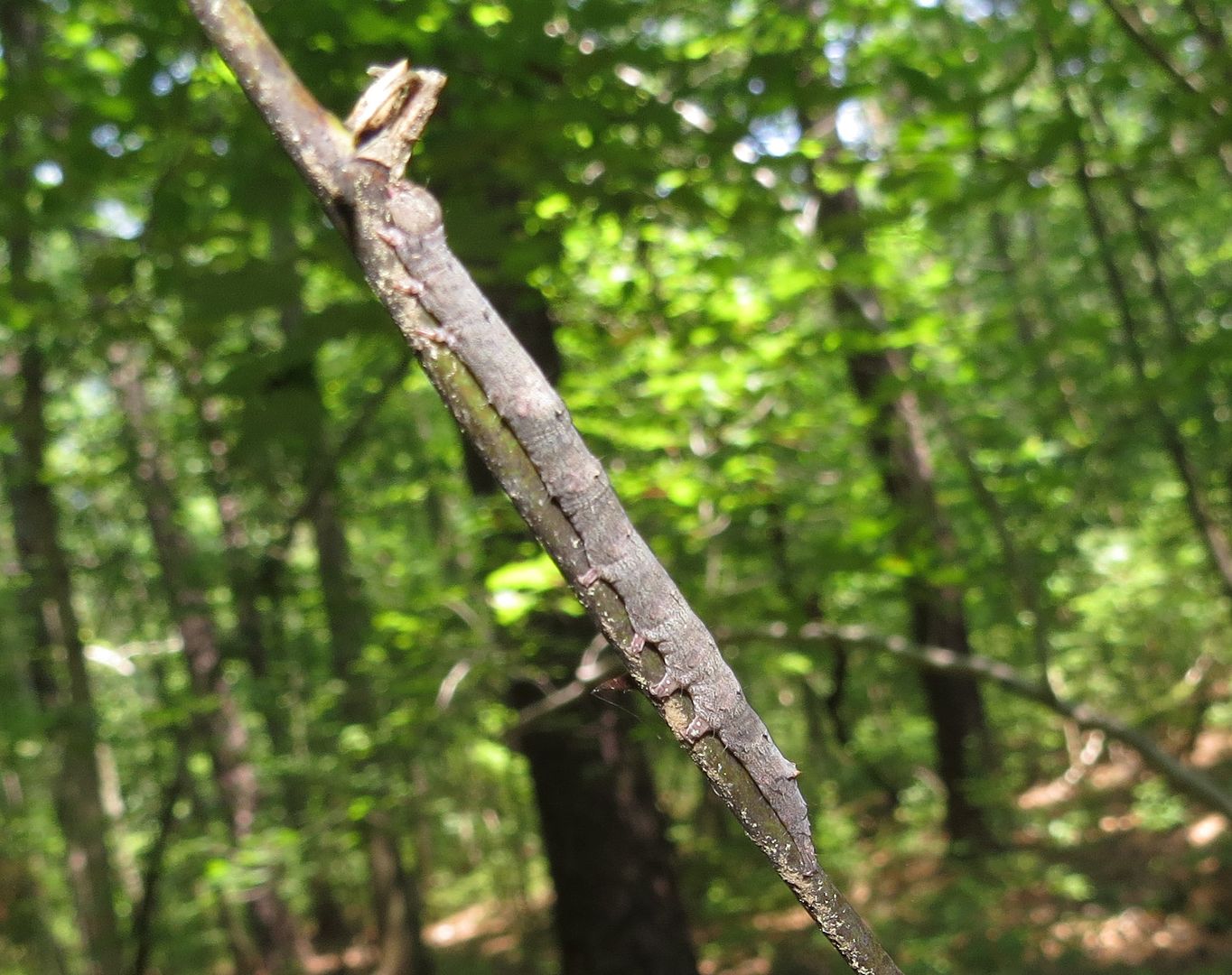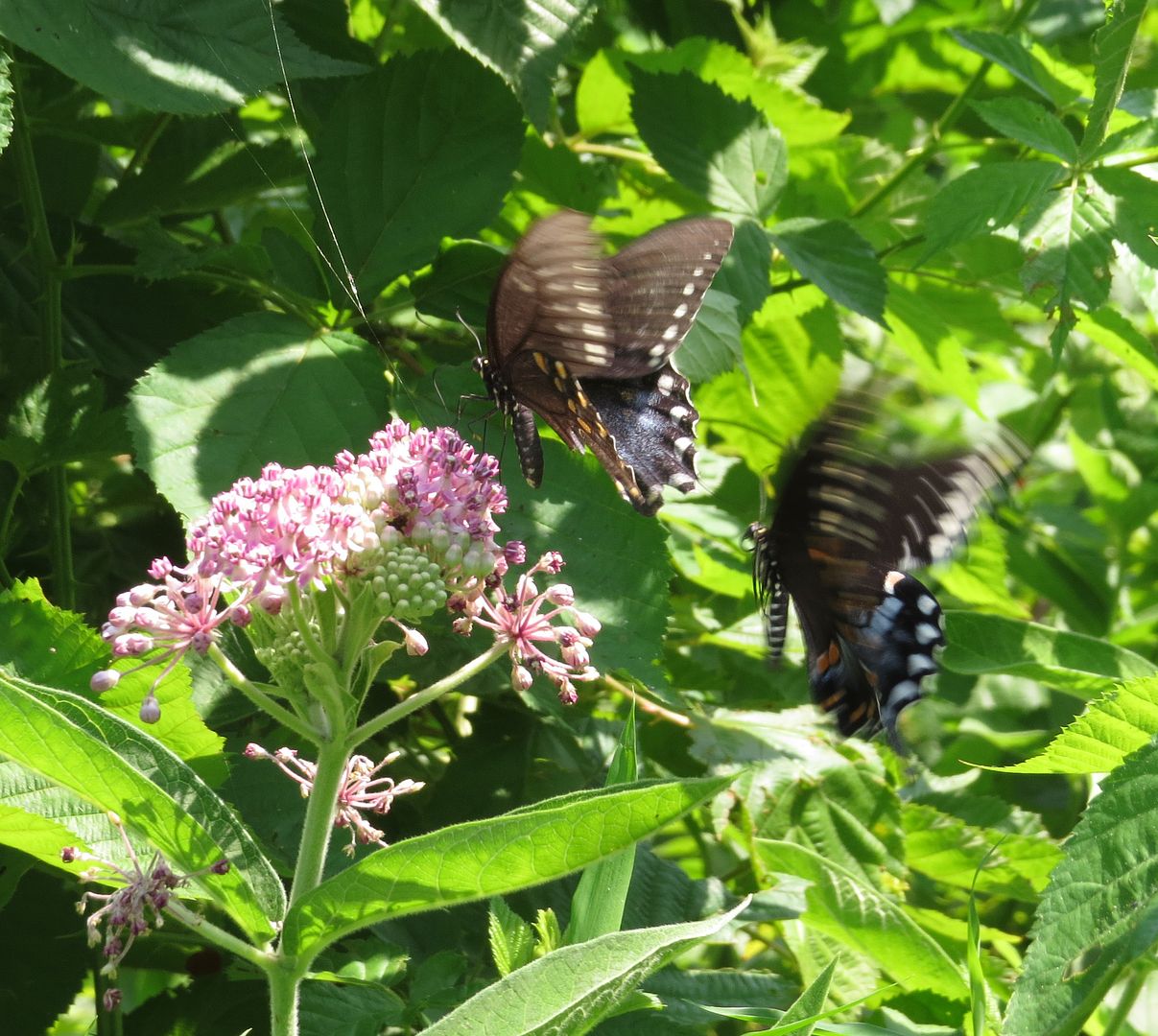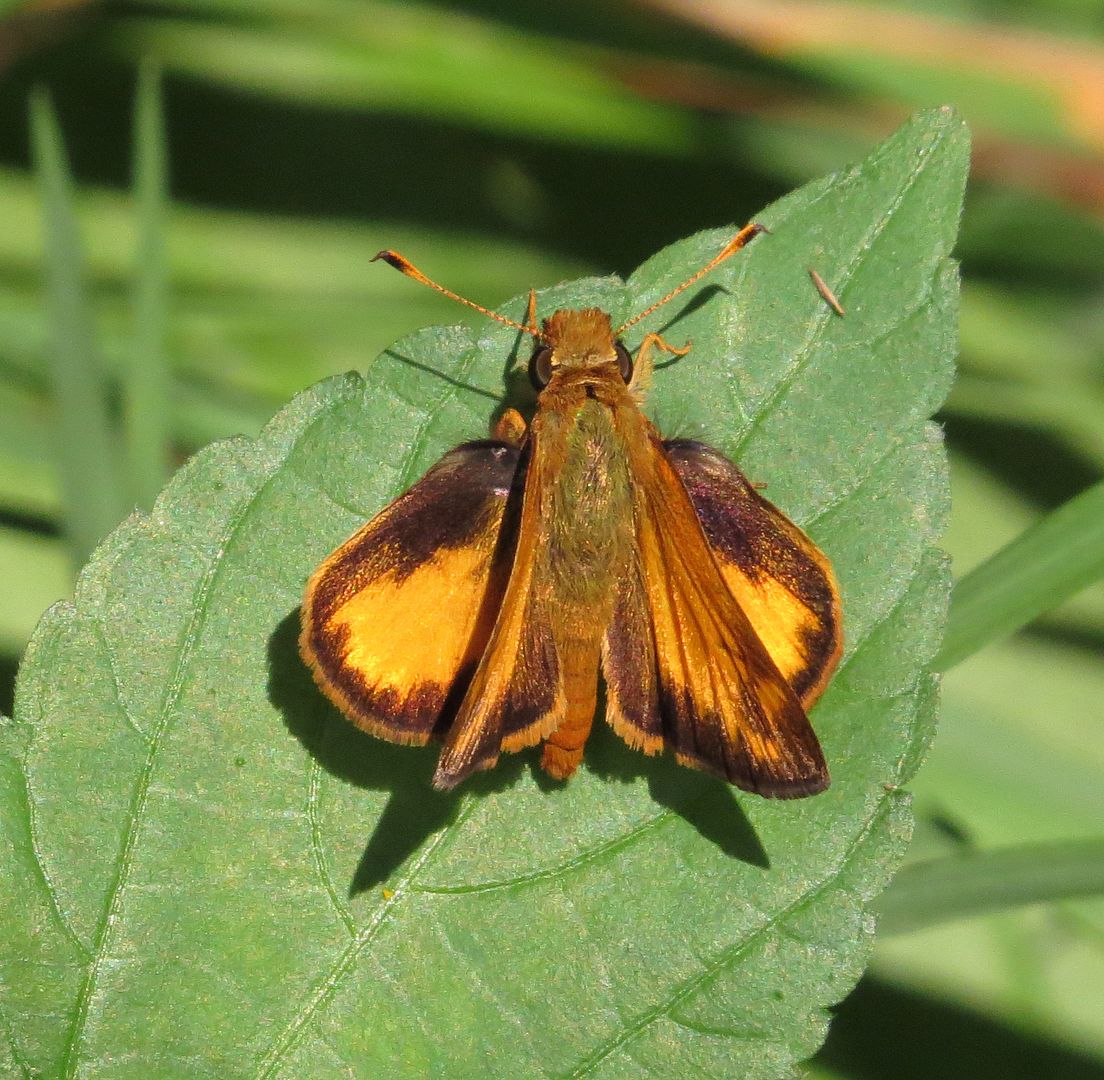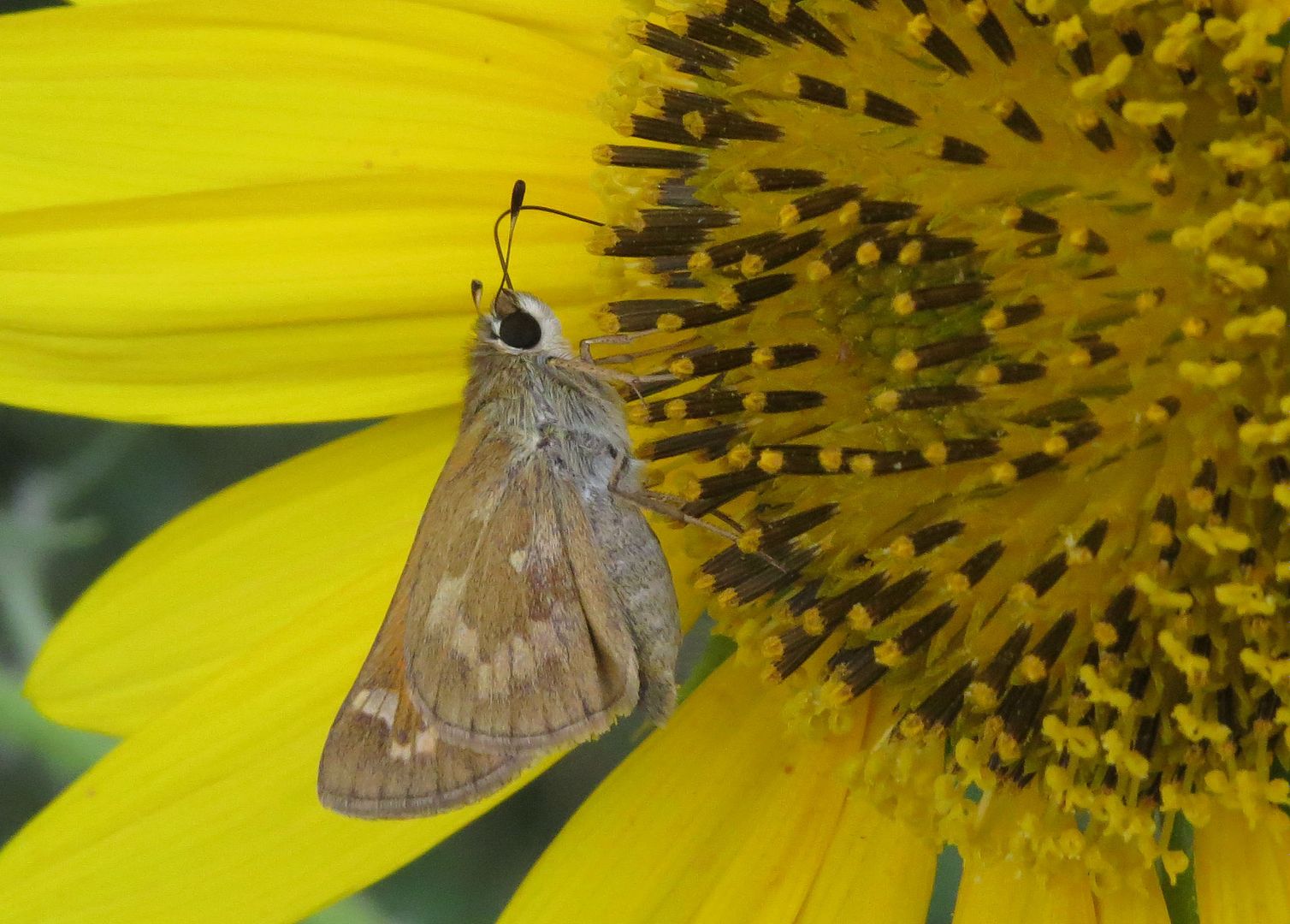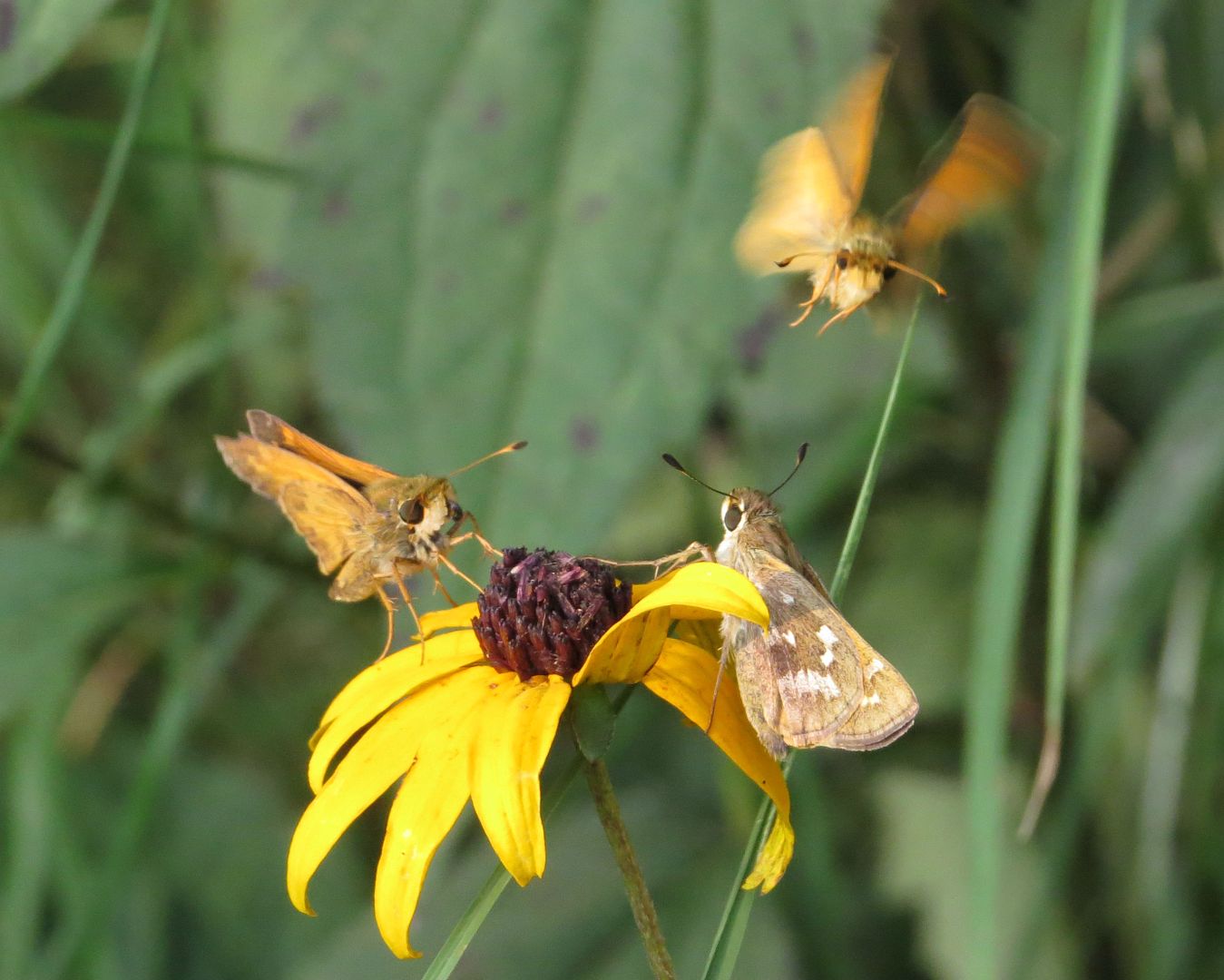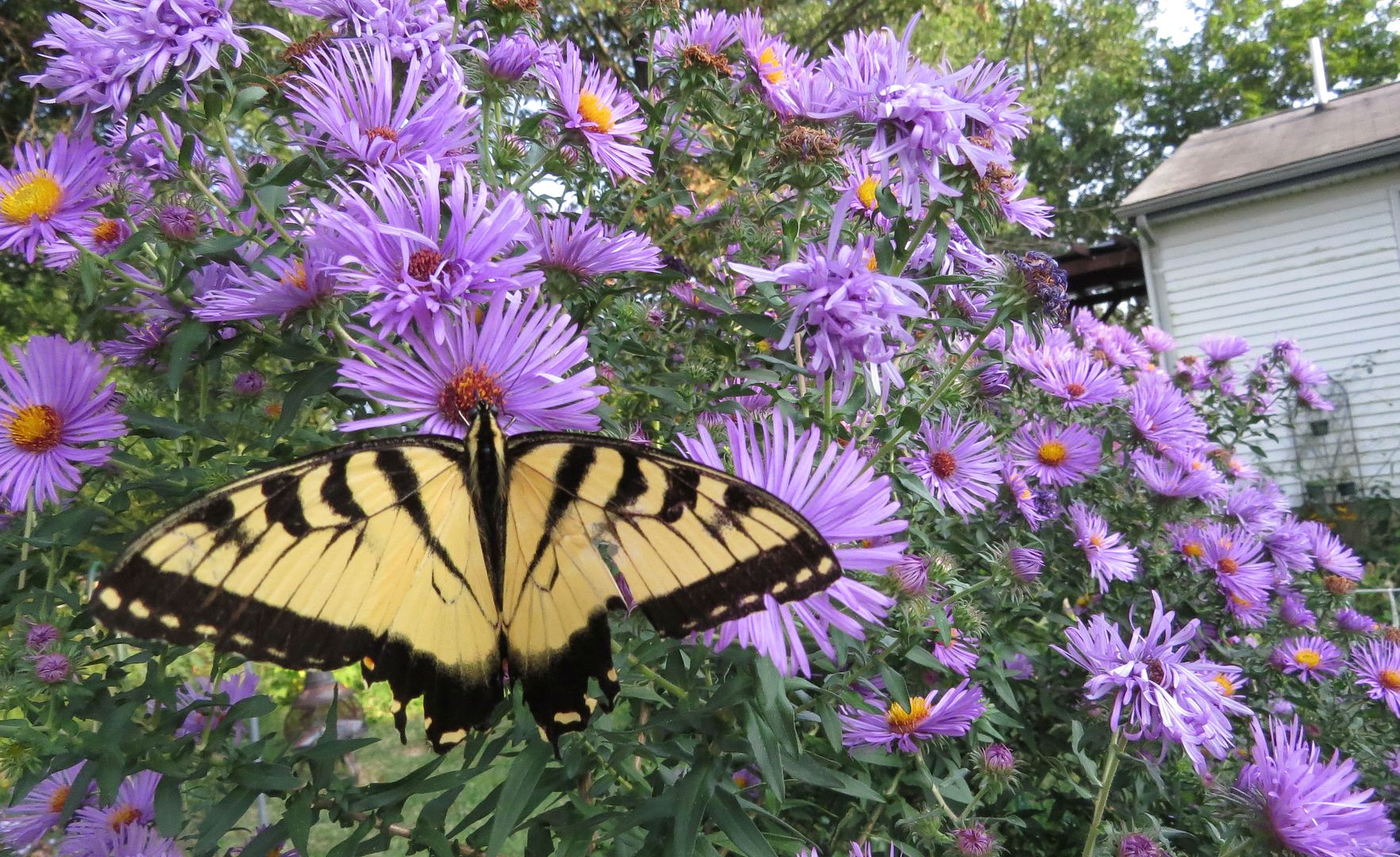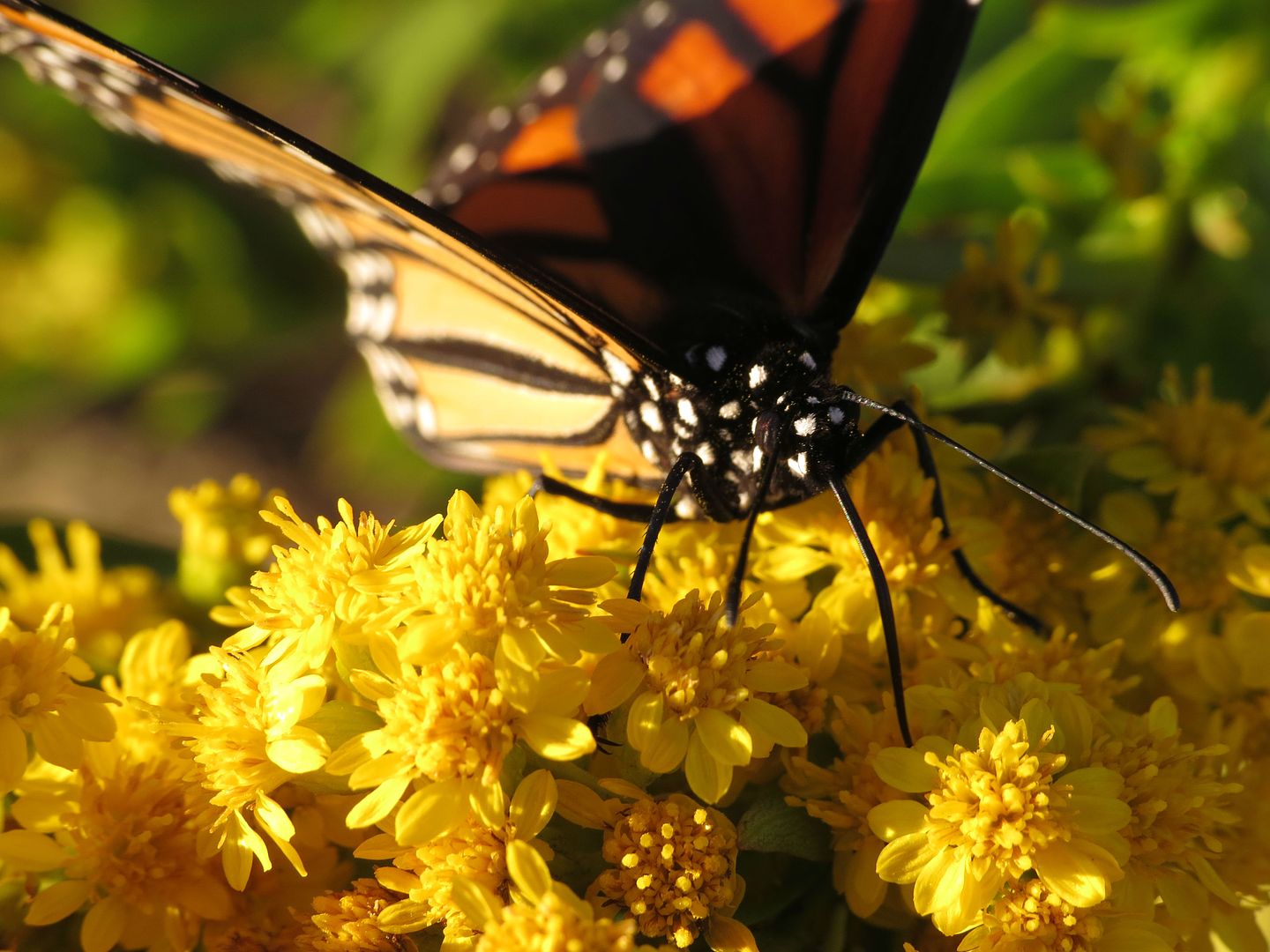From the previous year, my butterfly season started with a series of Black Swallowtail Chrysalises over wintering in a cage I kept down in my basement. Well one emerged prematurely which lead to this shot.
Over the next three months as they hatched out, I did start letting them go. Despite this though I am sad to report that ended my experience with Black Swallowtails for the year. While I'm sure some of them survived, none of them returned to my garden to lay eggs or even pay me a visit.
Now I don't think I did anything particularly bad. Even around carrot farms this species is not considered a pest. For whatever reason they just don't spread dramatically in huge numbers.
I found this Silver Spotted Skipper Caterpillar nestled on my False Indigo tree. It's a new plant I'm trying out, which will hopefully flower this year. Sadly I think a bird ate this little guy.
Hummingbird Moth laying eggs on my Coral Honeysuckle.
A Pandorus Sphinx nibbling on Virginia Creeper. I had no idea these caterpillars were this enormous.
I don't know the name of this one but if I recall right they can spray acid if you disturb them.
A Spicebush Swallowtail sipping at some Hairy Swamp Milkweed. Note the missing orange spot under the wing, how it's replaced with just the blue smear. This species mimics the Pipevine Swallowtail which is poisonous for birds to eat. Despite this ability, it seems the Pipevine Swallowtail doesn't need to be around to have decent Spicebush Swallowtail populations. I'm told though when the Pipevine Swallowtail is around that it benefits all the other species of black butterflies that mimic them.
There were about six of them zooming around this milkweed patch.
One of these days I need to figure out which of the random grasses in my yard is supporting the skipper population.
Every autumn, I'm suddenly blessed with droves and droves of skippers.
And they absolutely loved the Rudbeckia of all things!
New England Asters I'd have expected to be the bigger hit, as it was with everything else. But not the skippers, they worked the Rudbeckia until it stopped blooming. Very strange. Any who this is a Tiger Swallowtail, male judging from the lack of blue along what I call the tramp stamp.
Monarchs! This was an awful year for them. Years ago when I started doing this (back in 2008 maybe?) I planted Swamp Milkweed and with in a few weeks there were Monarchs, not only having sex on the lawn but laying eggs all over the milkweed patch. I had caterpillars all summer long, and witnessed one emerging from its chrysalis. It's actually that moment that brought me tears that I was really hooked on this whole native plant thing. But this year tragically I didn't see a single one in my garden.
It wasn't until I took a trip to Cape May with a few friends that I really saw them this year. There were stands of Seaside Goldenrod planted all along the beach specifically to help the Monarch migration. While I saw a few dozen flying around it really wasn't enough to give me any sort of hope that their population was doing well at all.
I know that they're by no means endangered. It's simply that the population that migrates through the eastern half of North America will be lost. They're doing okay out in California, apparently there's a population that migrates through South America as well, but what a shame it would be to never see the butterfly that inspired me to garden to ever flutter through my yard again.

